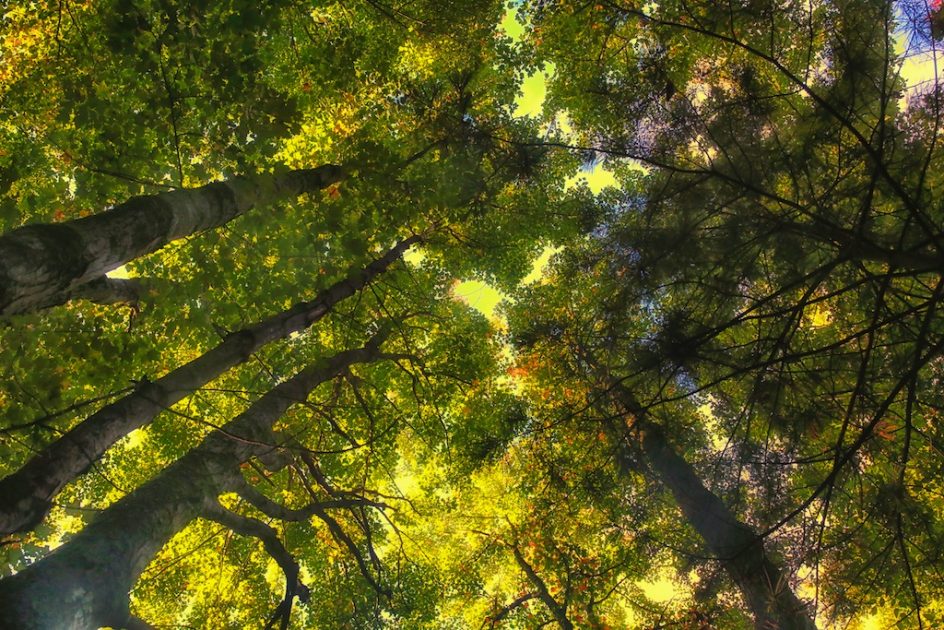
The Hidden Life Of Trees, by the German biologist Peter Wohlleben, is one of those books that will forever change the way you see a tree, or a walk in the woods. A beautiful mixture of romance and grounded science, Wohlleben did not write a woo-woo book for tree huggers, he wrote a perceptive and scientifically support study of the social networks of trees, the way they care for one another, help their sick and dying, share the sun, fend off dangers and communicate through smells and roots and microbes.
I’m on chapter four, which is called “Love,” and in it, Wohleben describes the ways in which trees love one another and mate. The leisurely pace at which trees live their lives is also apparent, he writes, when it comes to procreation. Reproduction is planned at least one year in advance.
Sometimes, tree love happens once a year, sometimes it takes longer, it depends on the species. Conifers send their seeds out into the world at least once a year, deciduous trees have completely different sexual habits. Before they bloom, they agree among themselves. Should they go for it next Spring, or would it be better to wait a year or two?
Trees in a forest, says Wohlleben, prefer to bloom at the same time so that the genes of many individual trees can be well mixed. Deciduous trees have other factors to consider: how browsers like boar and deer distribute their seeds, and survive by eating them in winter. Conifers bloom every year, which means bees are an option for pollination because they would always find food. Because there is almost no animal that likes to store conifer seeds for winter food, the trees release their potential offspring into the world on tiny wings. Thus equipped, their seeds float slowly down from the tips of their branches and can be easily carried along on a breath of wind.
Some species avoid inbreeding: each individual tree has only one gender. There are male and female willows, which means they can never mate with themselves but only procreate with other willows. Scientists have found that all willows secrete a particular scent to attract bees, and once the bees arrive, the willows switch visual signals. Male willows make their seeds bright yellow, which attracts the bees to them first.
Once the bees have had their first meal of sugary nectar, they leae and visit the inconspicuous greenish flowers of the female trees. When it comes to love for some species of trees, wind and bees come equally into play. As both cover large distances, they ensure that at least some of the trees receive pollen from distant members of their species, and so the local gene pool is constantly refreshed. Isolated strands of rare species of trees, where only a few trees grow, can lose their genetic diversity. When they do, they weaken, and after a few centuries, disappear altogether.
I am eager to get to Wohllenen’s writing about how trees communicate and for social networks. Walking in the woods today, I came to understand how much more is happening – right under my nose – than I have ever comprehended and shared, and I am eager to read this much-acclaimed and loved book and see the forest anew, and in a completely different way.
When I looked up take this shot of the forest canopy over my head and Maria’s, I could almost hear the trees talking with one another, and working to share the sun to the benefit of all. We can learn so much from them.
